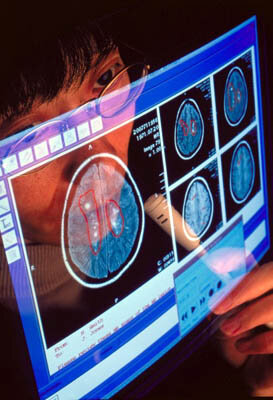ITT: Results Assessment of ESA-sponsored Telemedicine Projects
The General Studies Programme (GSP) of ESA announces the release of an invitation to tenders (ITT) for a new project aimed at assessing the results of ESA-sponsored telemedicine projects (Ref. AO6164). The complete documentation of this ITT can be retrieved on the ESA EMITS website.
Telemedicine activities at ESA
Since a number of years, the European Space Agency (ESA) is actively involved in promoting the development of telemedicine applications. Telemedicine, which consists in the provision of medical services at a distance through the use of Information and Communications Technologies (ICT), is relevant for space under two different perspectives. First, for its potential support during manned space flight missions, in particular to avoid (whenever possible) the re-entry of the crew in case a medical problem arises during the flight. Second, for the potential role that different space elements such as satellite telecommunications, satellite navigation and earth observation can play in facilitating the provisioning of telemedicine services for the benefit of the citizens and organisations in different utilisation scenarios on the ground.On one hand, when dedicated to astronauts in spacecrafts or crews of space analogue habitats (e.g. Concordia station in South Pole), telemedicine has lead to a series of development projects tightly associated with the very specific domain of space medicine, and aimed at the prevention and management of medical emergencies during space-related missions. This is for instance the case for robotized tele-echography. On the other hand, telemedicine using space assets to facilitate the provision of services on the ground has triggered a significant number of activities in different domains of eHealth (e.g. tele-consultation, second opinion, tele-education for healthcare professionals, tele-homecare), which, in someway, have exploited the capabilities of:
- satellite telecommunications, to link healthcare professionals and patients whenever they are placed
- satellite navigation, to localise and help guiding medical emergency teams in their missions
- earth observation, to extract environmental data with specific relevance for health aspects, and which can contribute to build up health risk maps
- and sometimes a combined use of these above capabilities together with technologies initially developed for manned space flights but which can also be applied on Earth (e.g. robotized tele-echography service).
Telemedicine can bring benefits...

This second type of telemedicine applications has raised quite a lot of interest within different organisations such as potential beneficiaries, healthcare organisations, systems suppliers, service providers and research institutions. Potential opportunities for new businesses have been catalysed by the sequel of benefits that are typically associated with telemedicine, such as:
- the possibility to foster a better utilisation of healthcare system resources (like infrastructures, medical equipment and healthcare professionals, that can be centralised and reached by telecommunications means rather than being scattered over the territory)
- the ability to improve the access to healthcare services (such as the access to specialist healthcare for second opinion or tele-consultation from remote areas, or via tele homecare for elderly people at home)
- the possibility to reduce indirect cost for the patients (for instance, avoiding cost incurred by patients to move into the healthcare structure when not strictly needed)
- the opportunity offered by distance learning for continuing medical education (pursuing the paradigm of moving knowledge rather than moving people).
... but there are barriers to overcome

In spite of such potentials, telemedicine is not developing as quickly as many actors were expecting. The slow uptake experienced by many initiatives aimed at building operational telemedicine services is often claimed to be caused by a number of barriers, which so far have proved to be pretty difficult to overcome. Among the most evident barriers:
- the fact that telemedicine becomes fully exploitable only when associated to an integrated informatics healthcare system
- the lack of interoperability of telemedicine systems and services at national and trans-national levels
- the lack of clear reimbursement schemes, if any
- the resistance to the changes induced by telemedicine in the healthcare organisations and patients
- the difficulty in working out a convincing telemedicine evaluation (aimed at providing evidence of the actual benefits brought by telemedicine)
- .
- etc...
Information
For more information about this ITT, please contact the Space for Health team.





